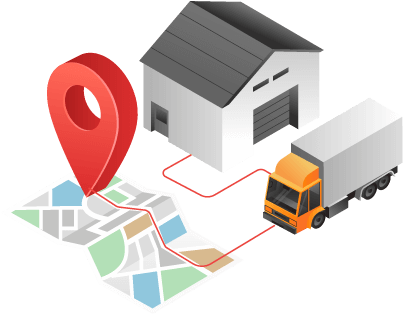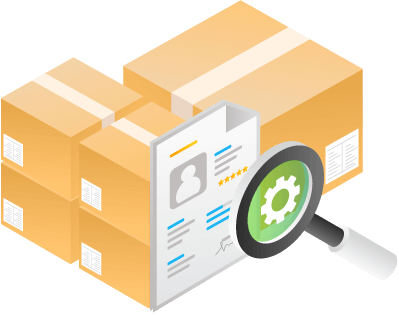Order Management Analytics
Built For

Order Management Analytics
Flying blind is never a good idea when managing orders. That’s where order management analytics steps in, giving businesses the insights they need to stay on top of their game.
Order management analytics isn’t just about crunching numbers—it’s about understanding how your orders flow, spotting any bottlenecks, and finding ways to get products to your customers faster and more efficiently. In this article, we’ll dive into the key metrics you should be tracking and explore how analytics can improve everything from forecasting demand to keeping your customers happy.
Key Metrics to Monitor in Order Management
In the age of multi-channel retail, businesses often find themselves juggling orders from various sources such as online stores and marketplaces, EDI, the direct sales team, and fax, email, or phone. Managing these orders separately can lead to errors, delays, and inefficiencies.
Centralizing orders from all sales channels into one unified system is a powerful strategy to enhance order accuracy and streamline operations.

Order Accuracy
Order accuracy is the cornerstone of customer satisfaction. It tracks the percentage of orders processed and delivered correctly without errors. Mistakes like shipping the wrong item or quantity can lead to costly returns and frustrated customers. Keeping an eye on this metric ensures your orders are accurate and on point every time.
Order Cycle Time
This metric measures how long it takes from the moment an order is placed to when it’s delivered to the customer. Shorter cycle times mean quicker deliveries, which boosts customer satisfaction. If this number starts to creep up, it’s a sign there may be inefficiencies in your process—whether in picking, packing, or shipping.
Fill Rate
The fill rate shows the percentage of customer orders that are fulfilled completely. A high fill rate means you have the right products on hand to meet demand. A low fill rate, on the other hand, can indicate stockouts, leading to lost sales or delayed orders. Monitoring this metric helps ensure your inventory aligns with customer expectations.
Order Lead Time
Order lead time measures the amount of time it takes for an order to move through each stage—from order placement to delivery. This metric is beneficial for identifying delays in specific areas like order processing or shipping. You can spot where improvements are needed to speed things up by tracking order lead time.
Order Status Visibility
With customers increasingly wanting real-time updates, having clear visibility into order status is vital. Order status visibility lets you and your customers see where an order is in the process—whether it’s awaiting shipment, in transit, or delivered. Keeping this information up-to-date boosts customer confidence and reduces inquiries about order status.
Using Analytics to Identify Bottlenecks
No business wants its order process to hit a snag, but bottlenecks can happen at any stage. The good news is that order management analytics help you spot problem areas before they slow down your operations. By diving into your order management data, you can identify inefficiencies and make adjustments that keep things running smoothly.

Spotting Delays in Order Processing
Analytics can highlight where orders take too long to move through the system. Are orders sitting in the picking stage for too long? Is shipping consistently delayed? By tracking the average time it takes to complete each stage of order fulfillment, you can pinpoint where the hold-ups are happening and take action to resolve them.
Pinpointing Inefficiencies in Picking, Packing, and Shipping
Analytics can reveal trends in picking errors, packing delays, or shipping slowdowns. For example, if you notice a recurring issue in the picking stage, it could indicate that your warehouse layout needs adjusting, or perhaps better training or updated equipment is needed.
Streamlining Fulfillment Through Data Insights
With the right analytics, you can dig into the specifics of your order management process and find opportunities to streamline operations. If certain products consistently take longer to pick or pack, it may be time to rethink your layout or stock placement. If shipping delays are common with specific carriers, you may need to renegotiate contracts or explore alternatives. Analytics provides the insight you need to address these pain points and improve efficiency.
Tracking the Impact of Changes Over Time
Once you’ve identified bottlenecks and made adjustments, monitor your data to see how those changes impact your performance. Are orders moving through the system faster? Has your order cycle time improved? Continuous monitoring ensures you’re always improving and staying ahead of potential issues.
Leveraging Data for Forecasting and Demand Planning

Accurate demand planning and on-point forecasting are critical for staying ahead in today’s competitive landscape. By leveraging data from your order management system, you can make better predictions about future demand and ensure you always have the right products available when customers need them.
Using Historical Data to Anticipate Future Demand
One of the most powerful ways to forecast demand is by looking at historical order data. By analyzing patterns over time, such as seasonal trends or sales spikes around specific events, you can make educated predictions about what’s coming next. This helps ensure you’re never caught off guard by a sudden surge in orders or a slow season.
Real-Time Data for Better Inventory Management
Real-time analytics allows you to respond quickly to changes in demand. By monitoring sales trends and customer behaviors as they happen, you can adjust your inventory levels to match the current situation. If a product starts flying off the shelves unexpectedly, you can quickly reorder and prevent stockouts while avoiding overstocking items that are slowing down.
Reducing Overstock and Stockouts
Analytics helps strike the perfect balance between having too much inventory and too little. Overstocking ties up capital, while stockouts result in lost sales and unhappy customers. You can avoid both scenarios by ordering the right amount at the right time by analyzing demand trends.
Aligning Demand with Supply Chain Operations
Forecasting is more than just what’s happening in your warehouse—it’s also about managing your supply chain efficiently. Analytics helps you coordinate with suppliers by providing insight into lead times, order frequencies, and potential delays. When you know how long it takes to receive certain products, you can plan accordingly and avoid gaps in your inventory.
Improving Demand Forecasting with Data-Driven Insights
Rather than relying on gut feelings or basic guesswork, order management analytics provide solid insights that improve the accuracy of your demand forecasts. Combining historical data, current trends, and customer behavior analysis allows you to fine-tune your projections and make smarter purchasing decisions.
Improving Customer Satisfaction with Order Management Analytics
Happy customers are the heart of any successful business; order management analytics can help keep them that way. By using data to streamline your operations and ensure timely deliveries, the customer experience and customer satisfaction can be prioritized and constantly improved.

Ensuring On-Time Deliveries
One of the key customer satisfaction factors is getting orders delivered on time. Order management analytics gives you a clear view of potential delays, allowing you to address them before they affect your customers. Whether it’s speeding up processing times or choosing more reliable shipping methods, data helps ensure that your deliveries are prompt and reliable.
Reducing Backorders and Stockouts
There’s nothing more frustrating for a customer than ordering a product only to find out it’s backordered or out of stock. Analytics allows for the monitoring of inventory levels in real time and spot trends in demand so you can reorder products before you run out. By staying ahead of stockouts and backorders, you keep your customers satisfied and reduce the chance of losing sales to competitors.
Improving Order Accuracy
Mistakes in orders—whether it’s shipping the wrong product or the wrong quantity—can quickly sour customer relationships. Order accuracy metrics help you track how often mistakes are made and where they occur. By identifying and addressing these errors, accuracy can be improved, ensuring your customers receive precisely what they ordered every time.
Providing Real-Time Order Updates
Customers love knowing where their orders are at all times. With order management analytics, you can provide real-time updates on order status, from processing to shipping to delivery. This level of transparency not only builds trust with your customers but also reduces the number of inquiries about order status, saving your customer service team valuable time.
Enhancing Communication and Trust
Order management analytics can help you predict and communicate potential issues before they become a problem for your customers. For instance, if there’s a delay, analytics tools can alert you so that you can notify your customers promptly and offer solutions. Clear, proactive communication builds trust and keeps customers happy, even when things don’t go as planned.
Using Inventory and Order Management Software for Analytics
Inventory and order management software has built-in analytics that track everything from order accuracy to lead times. With these tools, you can monitor your key performance indicators (KPIs) in real time, ensuring you always know how your business performs.

Customizable Dashboards for Easy Access to Data
A key benefit of using inventory and order management software for analytics is the ability to create customizable dashboards. These dashboards provide an at-a-glance view of your most important metrics, giving you immediate insights into how your orders flow. Whether you need to track order cycle times, fulfillment rates, or stock levels, having all the data in one place makes decision-making easier.
Real-Time Reporting Across Departments
With inventory and order management software, reports are updated automatically in real time as new data comes in, meaning you can get a snapshot of your operations whenever needed. This level of visibility also promotes better coordination between departments, as everyone simultaneously has access to the same information.
Integration with QuickBooks and eCommerce Platforms
Analytics becomes even more powerful when inventory and order management software integrates with platforms like QuickBooks and eCommerce systems. By centralizing inventory, order management, financial, and online sales data, you can get a clearer picture of your overall performance and provides a complete view of your business operations in one place.
Tracking KPIs to Drive Continuous Improvement
Using inventory and order management software for analytics and to monitor key performance indicators (KPIs) lays the groundwork for continuous improvement. From order accuracy to lead time reductions, having access to real-time data ensures you can quickly adapt to any changes in your business. With automated alerts and detailed reporting, you’re always one step ahead.
Best Practices for Order Management Analytics
To get the most out of your order management analytics, follow a few best practices. Whether you’re looking to improve efficiency, reduce costs, or enhance customer satisfaction, these tips will help you maximize the value of your data.

Set Up Automated Reporting
Manually pulling reports can be time-consuming and prone to error. By setting up automated reporting in your inventory and order management software, you can ensure that critical metrics are regularly updated and delivered straight to your inbox or dashboard. This saves time and allows you to stay on top of performance without needing to manually check the data every day.
Monitor the Right KPIs
Not all metrics are created equal. To get the most value from your analytics, focus on the KPIs that align with your business goals. For example, if customer satisfaction is your top priority, you should focus on tracking order accuracy and on-time deliveries. Cycle time and lead time may be more relevant to streamlining operations. Tailoring your KPIs to what matters most will help you focus on driving the right improvements.
Regularly Review and Adjust Metrics
Your business isn’t static, and your analytics shouldn’t be either. It’s essential to regularly review the metrics you’re tracking to ensure they’re still relevant to your goals. You may need to adjust or add new KPIs as your business evolves. For example, additional metrics around fulfillment efficiency or inventory availability might become necessary if you’re expanding into new markets or channels.
Involve Your Team in the Process
Order management analytics shouldn’t just be the responsibility of one person or department. Involving key stakeholders across departments—from sales to warehousing—ensures everyone is aligned with the business objectives. By making analytics accessible to your whole team, you empower them to make data-driven decisions that improve organizational efficiency and performance.
Implement Data-Driven Decision Making
The true power of analytics lies in its ability to inform decisions. Data-driven decisions based on real-time analytics helps businesses identify areas where improvement is needed and implement changes that enhance operations. Whether speeding up fulfillment or improving inventory levels, using data to guide your actions ensures you’re constantly optimizing.
Continuously Track and Refine Your Processes
Order management analytics is not a one-time task—it’s an ongoing process. Continuously tracking your metrics and refining your processes helps you stay ahead of issues and seize opportunities for improvement. This iterative approach ensures you continuously optimize your operations for better performance and customer satisfaction.
Call us at 817-870-1311




